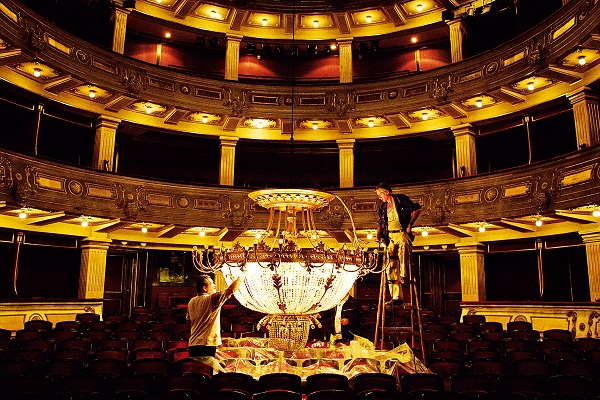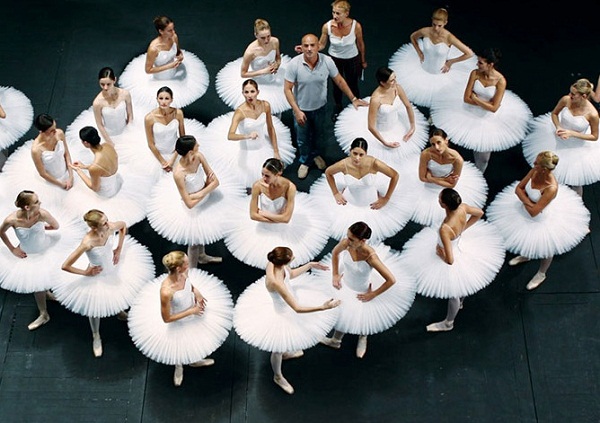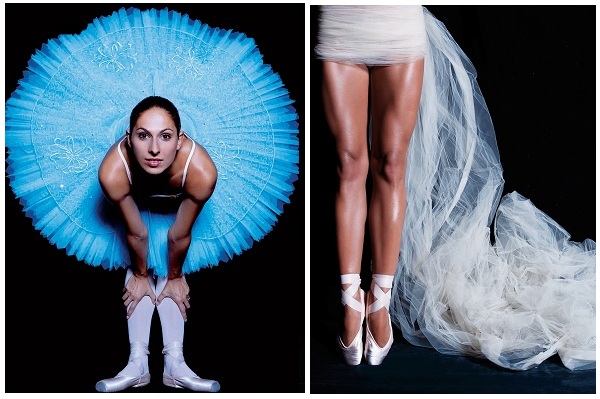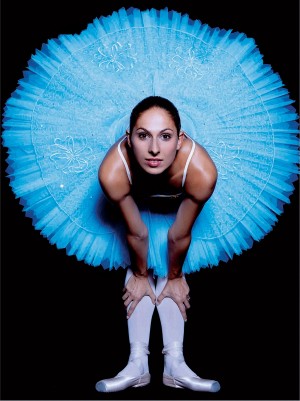Artist of the Week 10/3-10/9: Dina Johnsen Uncovers ‘The Unseen Beauty’ of the National Theatre
Russian artist Dina Johnsen has only recently jumped headfirst into the constantly evolving field of photography. Before her plunge into the flash induced world of ballerinas, actors, and opera singers of the National Theatre in Belgrade, she was hard at work as a senior advertising sales manager of Cosmopolitan and the publisher of Playboy Russia in Moscow. And she would still be there if it were not for her husband who was offered a job in Belgrade, Serbia. Abandoning all that she knew, inclusive of her 16-year career in publishing and magazines, Johnsen packed her bags and followed her husband to the Serbian capital.
Given her previous experience and a flair for the artistic, it was not long after arrival that she discovered her next project. However, it didn’t come without its difficulties. Though Johnsen had previously managed five magazines, she had an awfully hard time finding work that both satisfied her and brought her similar rewards to those she had on a day-to-day basis in her past home. Not used to a slow-paced lifestyle, Johnsen became enamored with the idea of becoming a photographer due to its glamorous, exhilarating and fast-paced atmosphere — not to mention its ability to expose the unknown and forgotten. Walking through the spacious and extravagant halls of the National Theatre, she realized that its stories were left untold and unseen by the rest of the world. After discussing it with the director of the venue, she gathered a team of makeup artists and assistants (some of who had worked at the theatre), and began her first photography project – a book entitled The Unseen Beauty showcasing the hidden magnificence of all the rooms and entities that make art come to life in the 114-year-old theatre.
The result is a magical journey into the graceful movements of the ballet dancers, the laughter and tears of the actors, and the silent voice of the opera singers as well as the people who work day and night behind the scenes. Page after page is filled with emotion, detail and stories, whether of the shoemaker who sits wearing an unwavering look on his face with only a twinkle in his eye as he fashions shoes together with his hammer, or the toned legs enveloped in the white attire of a ballerina which showcase the relentless hours of rehearsal that led to their elegance and splendor in dance.
When asked what her fears were when creating this project as well as when working in this new field, she expressed having a multitude of worries.
“Oh, I have so many fears! I am afraid that I don’t do it well enough; I feel shy. I feel low when I cannot find the right location or feel lack of ideas. But then I start working. I work and work and work. And the result comes,” she said.
Amidst preparing for her next move to Oslo, Norway as well as creating her second photography book, Johnsen took the time to discuss her newfound interest in photography, working with the celebrities of the National Theatre, and what it meant to her to make the unseen beauty of the theatre brought to life for millions of viewers across the world.

Electricians cleaning the chandelier at the National Theatre in Belgrade. Photo Credit: Dina Johnsen.
GALO: You recently made a 140-page photography book entitled The Unseen Beauty, which showcases the various personalities and areas of the Belgrade Theater in Serbia. According to your video, the project was made as a gift to the theater since they did not have a photo book of their acts and performers as well as of the venue itself. Besides providing them with such a book, what was your motive for making this collection? Did your goal correlate in any way with The Telenor Foundation (the sponsor of the project) in promoting and developing the art and culture of Serbia?
Dina Johnsen: My background is [in] glossy magazine publishing. I worked for various magazines such as Cosmopolitan, Marie Claire, Playboy, [and] Madame Figaro since 1996. So, when I came to Belgrade in 2009, I could not find an interesting job and started thinking what could I do to get my busy, full of excitement and recognition, professional life back. After thinking about [it for] a year, I decided to become a photographer and took private lessons at the Academy of Arts to learn [the] technical part of photography. I started practicing at the studio from the very first day, photographing my friends and some models. In three months, I felt ready for my first project.
I wasn’t interested [in] shooting for fashion magazines here. Knowing that “celebrities sell,” I decided to make the photo book about the National Theatre in Belgrade — the biggest and the oldest cultural institution of the Balkan region. I researched and realized that the theatre [didn’t] have any fresh photo materials or illustrated books, just photos from the performances. So, I met the director and offered him my project. I said that I [would] need him to open the doors of the theatre to me and I [would] make the book of 2,000 copies and find the sponsor to cover all the costs. I also knew that Telenor Foundation (known as the leading corporate responsibility company in the country) had a contract with the theatre donating funds to improve its infrastructure. So, I offered my book to Telenor Foundation to be part of the cooperation, which was very much in line with the policy of the foundation.

Ballet dancers featured in “The Unseen Beauty” book by Dina Johnsen. Photo Credit: Dina Johnsen.
I was committed to work “pro bono,” as I saw that I had a chance to make something [that] people will like and remember for many years. As a result, I made friends with so many beautiful artists, got acquainted with the Serbian culture, and became a passionate fan of the Serbian ballet. When I launched my book in November 2011, the project received huge media coverage which was very satisfying, really, as I worked so hard to make it happen.
GALO: According to various reports, you made the move to Serbia from Moscow, Russia and left the world of journalism and publishing after your husband received a job offer there. Had he not received such a proposal, would you still have gone forward with leaving the career you had established for yourself over the course of 16 years and plunged head first into the realm of photography?
DJ: No, I would never [have] given up my career and started doing something different if we stayed in Moscow. I was very successful managing five magazines with the overall monthly circulation of 700,000 copies. I had to give it all up because I followed my man. So, when I came to Belgrade (a much smaller market, obviously), I had to reinvent myself.

(L-R) Ballet dancers Ana Ivancevic and Milica Jevic. Photo Credit: Dina Johnsen.
GALO: Where did your interest in photography stem from? Was it propelled by having worked in the media industry for such publications like Marie Claire and Playboy Russia which place great emphasis on full page photographs and graphic design or did it come from somewhere else?
DJ: Yes, I was working in magazines as a publisher as well as the editor-in-chief for one of my magazines, so I had a lot to do with photography (selecting photos together with my photo editors, choosing the right style for a magazine, being involved in production and working with some international photographers). We had a great project, for example, with David Lachapelle back in 2002 when we invited him to Moscow to shoot two photo stories exclusively for the Russian Playboy. Being the publisher of Playboy Russia, I was also doing fundraiser for this project and was the producer. It was a great chance to learn about David’s style and production process. I was also working with the art directors of my magazines, defining the style of the products. So becoming a photographer was a natural thing.
(Article continued on next page)

